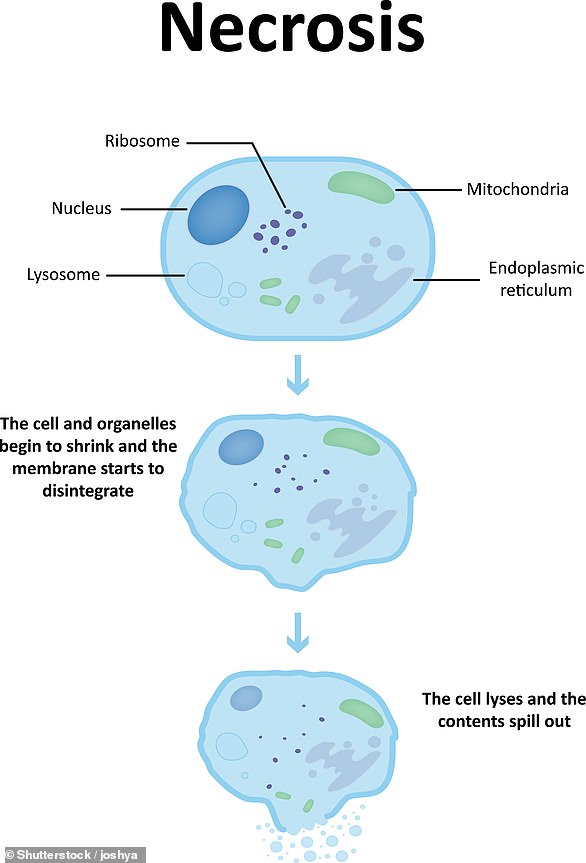California man dies from flesh-eating bacteria caught in San Diego pond
PICTURED: California man, 41, who died of a flesh-eating disease he contracted after chasing his dog into a pond
A man in California has died of a flesh-eating disease after chasing his dog into a pond.
Jeff Bova, 41, had a small cut on his right arm when he waded into standing water in San Diego last month.
The wound is believed to have been infected with bacteria, which caused necrotizing fasciitis, a deadly condition that affects the body’s soft tissues.
What started as a small red spot quickly progressed to swelling, blisters and pus that felt like “sour” as it trickled down his arm.
Jeff Bova, 41, of San Diego, died after becoming infected with a flesh-eating bacteria. He caught it from a pool of still water

His mother Susan McIntyre, 67, pictured above with him, said it was ‘difficult’ and that ‘everything happened so fast’
The handyman tried to treat the infection at home with antibiotic cream and moisturizers.

Mr Bova became infected after chasing his dog into a pond (pictured above with a pet dog)
But eventually the pain got so bad that he went to the hospital, where he died two days later.
His mother speaks about his story to urge others to seek medical attention if they have an infection and to avoid standing pools of water.
Susan McIntyre, 67, of El Cajon, California, said he was killed by necrotizing fasciitis.
She said NBC news: “He got really nasty blisters and he said it felt like… when his arm oozed acid was running down his arm.”
Speaking of the effect his death had, she said fighting back tears, “It’s hard… everything just happened so fast.
“Just before he passed away, he told me he had a job to do for me. He finished it in a few days.’
Necrotizing fasciitis is usually caused by bacteria like Strep A, which can multiply while lurking in pools of standing water.
The condition develops when bacteria enter the body, often through a minor cut or scrape.
As they multiply, they release toxins that begin to kill the surrounding tissue.
The bacteria spread quickly in the body, causing symptoms such as bumps on the skin, bruising, sweating, fever, and nausea. Organ failure and shock can then result.
Sufferers must be treated immediately to prevent death, and are usually given strong antibiotics and surgery to remove dead tissue.
Amputation may become necessary if the disease spreads down an arm or leg.
Cell death caused by necrosis cannot be reversed, medics say.
There are about 1,000 cases of necrotizing fasciitis in the United States each year.
The flesh-eating bacteria is fatal in about 20 percent of cases, with survival rates decreasing the longer a person delays treatment.
In San Diego, heavy rainfall recently created a number of stagnant pools of water.
Ms McIntyre urged others to avoid the pools, saying: ‘Stay away from standing water, especially if it’s been raining, as there’s only a lot of bacteria in it,’ she urged.
“If you get a cut and it starts to turn red, go to the doctor right away — don’t wait.”


